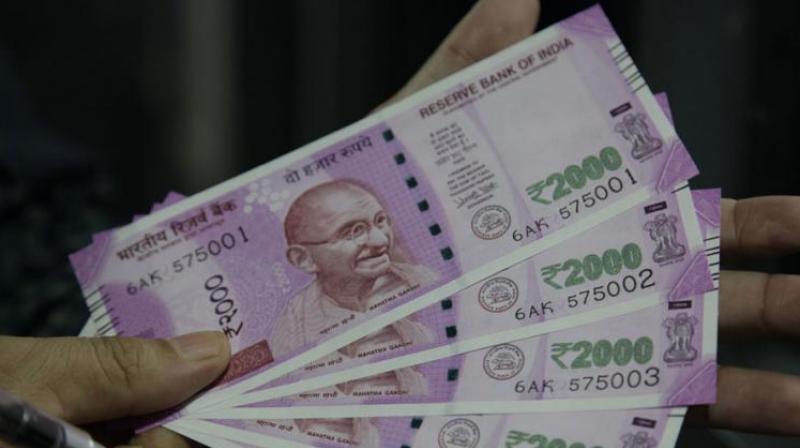Note ban & the art of building narratives
The government has been arguing that this “shockâ€to the economy was necessary for long-term benefits.

Emotions are increasingly becoming important in politics. The economy is gradually being replaced by “emotonomy” in the global political discourse. Unsurprisingly, India is no outlier to this shift. The banning of high-value currency notes has predominantly been an emotional plank, having real economic consequences, both good and bad, in the short as well as long term, on diverse stakeholder groups. The government suddenly took out more than 80 per cent of the currency in circulation on November 8. The move appears to have struck an emotional chord with the public, which was ready to bear “short-term” inconvenience in the hope of long-term benefits. The poor chuckled at the notion of the rich being taken to task. However, when the “short-term” slowly started to border on the medium and, perhaps, long term, government pundits spurred into action and started working towards building a parallel narrative. Consequently, what started as a measure to curb black money is being quickly and intelligently turned into a campaign to promote digital money.
Let us revisit the initial days of this drive. One of the predominant questions at the beginning of the demonetisation debate was how would this move prevent generation of black money in the future, given the immediate issue of fresh notes of Rs 2,000 and re-issuance of Rs 500 notes. This and similar doubts would have died their natural death had the generation of new notes met their demand if the pain had been shortlived, and the public would have gone back to its usual ways of functioning. However, the inconvenience continued for much longer than initially expected, and it still continues. Even after working overtime, government printing presses have been unable to print an adequate number of currency notes, or replenish bank branches and ATM outlets quickly and efficiently. One wonders why the government does not look for overseas suppliers as it does whenever there is a domestic shortage of anything.
As a result, concerns of collateral damage such as unemployment and underemployment specially for daily wage earners; lack of access to medicare, severe damage to the informal economy, including small and medium enterprises, farmers, construction labourers, migrants and the like, emerged. This resulted in the poor wondering if the pain was worth it. To counter such growing negative narratives, the government started adopting a digital payments agenda and promoting its benefits of greater transparency, accountability and formalising of businesses. It publicised its already launched initiatives of Jan Dhan Yojana, RuPay cards and avenues offered to go digital. In effect, the government is increasingly emphasising that demonetisation is not an exercise to curb the supply of money in the economy, but a nudge to shift from cash payments to digital payments.
Latching on the agenda of a cashless society and showcasing the efforts which the government has been making to promote has resulted in two primary outcomes. First, it takes away the burden on the government to meet the increasing demand for paper currency, and thus hiding the poor planning and inefficiency in the execution of the demonetisation exercise. Second, it shifts the responsibility of pain to the poor and informal workers from the government to informal businesses, merchants and the like who have been reluctant to shift to the formal economy due to fear of being subject to the tax net and increase in regulatory compliance cost. Blame has also been shifted to financial sector service providers who have been unable to lure the poor to shift to digital payments.
In this background, the government has been arguing that this “shock” to the economy was necessary for long-term benefits. The perceived inconvenience will last till the time industry and market players remain reluctant to shift to the formal economy. The government has argued that long-term benefits of this exercise would be greater transparency, enhanced tax base, access to formal finance, and the like. This strategy of taking control of the political discourse by a sudden announcement, thereby building a narrative and shifting responsibility has not been a first. The government did a similar thing when it declared carrying out a surgical strike on select Pakistani outposts, avenging the terror attacks at Uri and Pathankot, and neutralising potential terrorists. Overnight, nationalist emotions were aroused and questions of “what went wrong” and “how to prevent repetition” were swept under the carpet.
Unsurprisingly, a comprehensive security review and corrective measures were absent, which left scope for terrorist attacks. The recent attack in Nagrota is a case in point. It will not be surprising if black money comes back to haunt governments of the future, requiring well-planned concrete multi-pronged measures, beginning with greater transparency and accountability in funding of political parties and elections. Already, there are reports of public servants being caught with huge bribes in new currency and black money hoarders using creative ways to hide their wealth or converting the same to white. The relentless push to digital payments has heightened concerns with respect to misuse of personal information, consumer protection and increasing barriers to access formal financial services. It will also not be surprising if the government comes up with another issue to take control of the political discourse once the debate around demonetisation starts becoming boring and the focus begins to shift to real issues like jobs, agriculture, poverty, health and education, by building a narrative and striking another emotional chord with the public. Just wait and watch.

